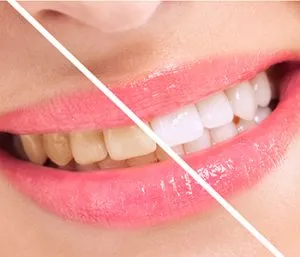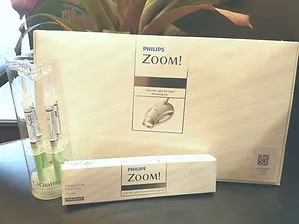Understanding Buffalo Teeth Whitening
Buffalo teeth whitening is a cosmetic dental procedure designed to lighten the color of your teeth and improve their overall appearance. The process involves removing stains and discoloration that accumulate over time due to various factors. Whether it’s from the foods and drinks we consume, our lifestyle choices, or simply the natural aging process, our teeth can lose their shine. This guide will delve into the specifics of why buffalo teeth may need whitening, the key factors influencing tooth color, and the top secrets for achieving a brighter, more confident smile. Proper teeth whitening can dramatically boost your confidence and leave a lasting impact. By understanding the basics, you’re well on your way to a dazzling smile.
Why Buffalo Teeth May Need Whitening
Buffalo teeth, like any teeth, are susceptible to staining and discoloration. There are several reasons why your teeth might need whitening. Common culprits include the consumption of dark-colored foods and drinks such as coffee, tea, red wine, and berries. These substances contain pigments that can adhere to the enamel, leading to staining. Tobacco use is another significant factor, as it introduces nicotine and tar, both of which can stain teeth severely. Additionally, the natural aging process can cause the enamel to thin, revealing more of the yellowish dentin underneath. Certain medications and dental trauma can also contribute to discoloration. Understanding these causes is the first step in determining the best approach to whitening and maintaining a healthy, vibrant smile.
Factors Affecting Buffalo Teeth Color

Several factors influence the color of buffalo teeth. The thickness and condition of the enamel play a crucial role. Enamel is the outer protective layer of the tooth, and its thickness varies from person to person. Thinner enamel allows the yellowish dentin underneath to show through more prominently. Genetics also contribute to tooth color; some people are naturally predisposed to have lighter or darker teeth. Diet and lifestyle choices significantly impact tooth color, as mentioned earlier. The presence of dental plaque and tartar can also affect the appearance of teeth, making them appear duller. Furthermore, certain medical conditions and treatments, such as chemotherapy or radiation, can affect tooth color. Being aware of these factors allows you to tailor your teeth whitening strategy for the best possible results.
Top 5 Secrets for Effective Buffalo Teeth Whitening
Secret 1 Research Professional Whitening Options
Professional teeth whitening offers the most dramatic and effective results. Dentists have access to stronger whitening agents than those available over the counter. Before undergoing any procedure, it is crucial to consult with a dentist to assess your oral health and determine the best whitening method. Professional treatments are generally more expensive, but the outcomes are more predictable and can address more severe discoloration. Researching different clinics and dentists in your area can lead you to a trusted professional with a proven track record. Professional whitening provides a safe and controlled environment with experienced staff, which significantly minimizes potential risks and complications.
In-Office Whitening Procedures Explained

In-office whitening, often referred to as chair-side bleaching, involves a dentist applying a high-concentration bleaching agent to your teeth. A special light or laser may be used to enhance the whitening effect. The entire procedure typically takes about an hour, and you’ll see noticeable results immediately. This method is ideal for individuals seeking immediate and significant improvement in their smile. Your dentist will protect your gums and soft tissues throughout the procedure, ensuring safety. The results can last for several months to a few years, depending on your habits and maintenance. After the treatment, it’s common to experience some sensitivity, but this usually subsides within a few days. This is a great solution for a quick, efficient, and professional whitening.
At-Home Whitening Kits
At-home whitening kits, prescribed by your dentist, offer a more convenient and affordable alternative to in-office procedures. These kits typically include custom-fitted trays and a lower-concentration bleaching gel. You’ll wear the trays for a specified period each day or night, following your dentist’s instructions. The results are gradual, but you’ll see a visible improvement over a few weeks. At-home kits are ideal for those who prefer a more flexible approach. Dentists often provide these kits because they offer personalized guidance. It’s vital to follow your dentist’s instructions and maintain regular check-ups to ensure the process is effective and safe. These kits provide a balance of effectiveness, convenience, and affordability.
Secret 2 Dietary Adjustments for Whitening
What you eat and drink significantly impacts the color of your teeth. Limiting or avoiding foods and drinks known to stain teeth is an essential part of maintaining a bright smile. Consider your diet carefully to ensure you aren’t undoing all of your whitening efforts. Staying away from staining agents will also help maintain oral health. Making these small adjustments goes a long way in your teeth whitening journey.
Foods to Avoid and Embrace

Some foods and drinks are notorious for staining teeth. Coffee, tea, red wine, and dark-colored sodas should be consumed in moderation or avoided altogether. Be cautious with berries, such as blueberries and blackberries, which can leave behind pigments. Tomato-based sauces and curries may also stain. Embrace teeth-friendly foods like apples, celery, and carrots, which can help remove surface stains. Dairy products, such as milk and yogurt, strengthen enamel, and therefore the tooth, which will help with your whitening efforts. Drink plenty of water to rinse away food particles and neutralize acids. These simple dietary changes can significantly contribute to a brighter, healthier smile. Try to balance your diet to maximize the positive effects.
Secret 3 Proper Oral Hygiene Techniques
Proper oral hygiene is fundamental for achieving and maintaining a white smile. Brushing, flossing, and using mouthwash effectively remove plaque and surface stains, which can significantly improve the appearance of your teeth. Good habits are essential for a healthy, white smile.
Brushing Techniques for Buffalo Teeth
Brush your teeth at least twice a day for two minutes each time. Use a soft-bristled toothbrush to avoid damaging your enamel and gums. Brush in gentle, circular motions, ensuring you reach all surfaces of your teeth, including the front, back, and chewing surfaces. Consider using an electric toothbrush, as it can be more effective at removing plaque. Make sure to replace your toothbrush every three months or sooner if the bristles become frayed. Proper brushing is more important than you think in the whitening game. Consistent and thorough brushing will help keep your teeth white.
Flossing and Mouthwash

Flossing once a day removes plaque and food particles from between your teeth, where a toothbrush can’t reach. This is crucial for preventing staining and promoting healthy gums. Use about 18 inches of floss, and gently guide it between your teeth, making sure to clean along the gumline. Rinse with mouthwash after brushing and flossing to further eliminate bacteria and freshen breath. Choose a mouthwash that contains fluoride to strengthen your enamel. Mouthwash can also help with keeping your teeth white. You will feel much fresher and cleaner after maintaining these habits daily.
Secret 4 Natural Remedies
If you prefer more natural approaches, several home remedies can help whiten your teeth. However, it’s important to note that these methods may not be as effective as professional treatments, and some can cause sensitivity if not used carefully. Always consult your dentist before trying any new remedy.
Baking Soda and Hydrogen Peroxide
Baking soda is a mild abrasive that can help remove surface stains, and hydrogen peroxide has a bleaching effect. You can create a paste by mixing baking soda and hydrogen peroxide. Brush your teeth with this mixture once or twice a week, but avoid doing it more frequently, as it can damage your enamel. Rinse thoroughly after brushing. While these items may improve the look of your teeth, consult with your dentist before using them. These can improve the look of your teeth but might not be the best solution.
Coconut Oil Pulling

Coconut oil pulling involves swishing a tablespoon of coconut oil in your mouth for 15-20 minutes. While not a direct whitening method, it can help remove bacteria and reduce plaque buildup. Some people believe it can help improve the appearance of their teeth over time. Spit out the oil and rinse your mouth with water afterward. While this is a natural remedy, it’s not a substitute for brushing, flossing, and regular dental check-ups. Oil pulling can be a complementary technique to your teeth-whitening journey.
Secret 5 Maintaining Your Bright Buffalo Smile
Maintaining a bright buffalo smile requires consistent effort and regular dental care. Proper aftercare will help keep your smile radiant and healthy. Make these habits your own to ensure success with your teeth whitening.
Regular Dental Check-ups
Visit your dentist for regular check-ups and professional cleanings at least twice a year. Professional cleanings remove plaque and tartar buildup, which can cause staining and dullness. Your dentist can also assess the health of your teeth and gums and provide recommendations for maintaining your white smile. Regular dental visits are essential for preventing dental problems and maintaining your oral health, which helps keep your teeth looking their best. A healthy mouth is a happy mouth.
Long-Term Whitening Strategies

To maintain your bright smile, practice good oral hygiene, avoid staining foods and drinks, and consider touch-up whitening treatments as needed. You may want to use at-home whitening kits periodically or schedule occasional professional whitening sessions. Using a whitening toothpaste can also help maintain the results. Protect your teeth from further staining by using a straw for dark beverages and rinsing your mouth with water after consuming staining foods or drinks. Long-term commitment to these habits will allow you to enjoy your bright, confident smile for years to come. Make these practices your own to keep your teeth white for a lifetime.
Conclusion
Achieving a brighter buffalo smile is within reach with the right knowledge and techniques. This guide has revealed the top five secrets to effective teeth whitening, from understanding the causes of discoloration to exploring professional and natural remedies. By incorporating these secrets into your routine, you can confidently enjoy a dazzling smile. Remember to prioritize proper oral hygiene, make smart dietary choices, and seek professional advice when needed. With consistent effort and care, your journey to a brighter, more confident smile will be a success. Make your smile shine!
